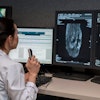"If you build it, they will come" may be a perfectly valid philosophy in Hollywood baseball fantasies, but an imaging center in a crowded marketplace is no field of dreams. The reality is that radiologists must assess the market and their business plan long before they open the imaging center's doors.
Although current industry dynamics are highly favorable for opening new independent imaging centers, there are a few key factors that entrepreneurs should address to help ensure the success of their business.
"Radiologists are busier, partners are retiring, and new, qualified associates are hard to come by. At the same time, groups need to address increasing volumes and the threat of turf erosion and competition," said healthcare consultant Scott Raymond, speaking at the 2002 Radiology Business Management Association educational conference in Las Vegas. Raymond is a vice president of AGI Healthcare Group in Carlsbad, CA.
The past few years have seen a surge in the number of imaging procedures requested by referring physicians. Raymond attributed this to both new imaging applications as well as the increasing acceptance of high-end MRI and CT for routine exams. Capacity has not kept up with demand for these services, generating a backlog that invites competition.
"Diversifying revenue streams to maintain and increase revenue per shareholder, attract recruiting candidates, and improve the quality of life for group members becomes a key objective. Ownership of the technical component of high-end imaging services will help accomplish this," Raymond said.
As hospitals are hard pressed to offer outpatient imaging services, and other specialties seek to bring high-reimbursement studies under their auspices, the market dynamic is practically compelling radiology groups to open their own imaging centers.
There are five critical questions that aspiring imaging center owners need to answer during a thorough market evaluation:
- What’s going on in the market?
- What are the market trends that represent opportunities for the group?
- What do the economics look like?
- What are the risks involved?
- Should we partner or not?
Market evaluations
"The key objective in an imaging center evaluation is to understand the economic potential of a given opportunity, the risk to the group members if unseen circumstances occur, and to make sure that the group never bets the farm," Raymond said.
In conducting a market evaluation of an imaging center’s potential, a group should begin by identifying its opportunities. These include service backlogs, the financial health of area hospitals and other imaging centers, and the prevalence of large specialty clinics that can be sources of referrals.
The group will also need to set the boundaries of its perceived catchment area, and then conduct a demographic analysis of that area. The analysis will include the population statistics for the market area as well as the utilization rates of imaging services for that population.
"For example, MRI services are roughly 45-65 scans per 1,000 population annually, CT is 80-110 per 1,000, and there is approximately a 10%-20% growth rate in these modalities each year. Of course, these rates vary state by state and, in some cases, area by area. So you’ll need to perform an analysis specific to your catchment area to get an idea of potential market share," Raymond said.
Other factors a group will want to assess as part of its market evaluation include contracting trends such as capitation or fee-for-service in its market, geographic considerations, and competition from other imaging centers, specialty groups, and hospitals. The group will also want to test the waters with its referring-physician base to gauge support for a new radiology services center in the community.
With this knowledge in hand, the group is in position to create valid market-share assumptions. These assumptions fuel the final part of the market evaluation, which is volume and capacity forecasts. In return, once volume and capacity numbers have been derived, the group can then tackle the issue of which modalities make the most sense for the center, he said.
Financial pro formas
At this stage of the process, the group can take its volume projections from the demographic analysis and create a reimbursement evaluation.
This should include a review of technical versus global reimbursement, as well as the percentages of income from managed-care contracts, and how conversion factors will affect this revenue. The group should also create a line-item budget of its projected operating expenses such as staffing, equipment, service contracts, and space considerations.
Scenarios should be documented to illustrate revenue versus expense over time, according to Raymond. A base-case scenario should demonstrate key volume, reimbursement, and expense assumptions over a 15-year project timeline, and should also include first-year cash flows. Alternative scenarios should also be drafted that show the impact of fluctuations to any of the key assumptions made by the group.
"Be sure to include professional fees, management fees, billing expenses, and the like as part of the pro forma," he said.
Venture considerations
Most groups will elect to obtain venture funding, as start-up costs for a full-service, multimodality imaging center can be daunting. First and foremost, Raymond recommended hammering out a statement of terms with any potential venture partner.
"Before moving forward with time-consuming venture/agreement discussions or negotiations, draft and agree to a venture term sheet that addresses key issues such as ownership percentages, venture governance, dispute resolution, management of the venture, billing, and so on," he said.
For hospital and radiology group joint ventures, there are special considerations such as Stark II rules, tax status, compliance, and valuation that will need to be addressed. For the radiology group, billing and management, staffing, professional services agreements, recruiting, coverage, and control of the center top the list of concerns that will need to be on a term sheet.
"Ambulatory payment classifications, although an incentive to create a joint-venture imaging center, should be looked at as the ‘cherry on top’ by both the hospital and the radiology group. The government may or may not choose to close the payment gap between in-patients and APCs," Raymond said.
By Jonathan S. BatchelorAuntMinnie.com staff writer
December 19, 2002
Related Reading
Joint venture makes PACS purchase possible, November 14, 2002
Building a successful new imaging center program, October 8, 2002
The strategic advantages of radiology networks, July 15, 2002
Surviving and thriving in a radiology group merger, June 6, 2002
Joint ventures can help radiology groups survive APCs, July 18, 2001
Copyright © 2002 AuntMinnie.com



















